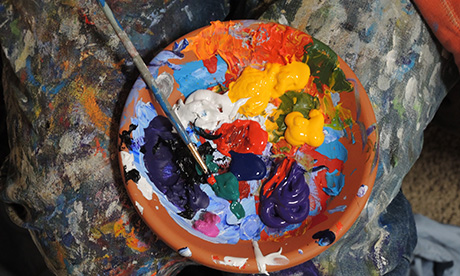Picasso is getting old.
His works are no longer relevant to the younger generations.
Admittedly he was a genius. But this genius is slowly going out of fashion, and he could also be subjected to questions.
Woke culture is coming. Universal contrition is scheduled.
Colonial Picasso! Patriarchal Picasso! White male Picasso!
As we are rewriting Roald Dahl’s novels, what should be done with Picasso’s paintings?
- Should we take them down because he behaved badly with his muses?
- Should we hide his iconic lithographs of the corrida, the traditional Spanish bullfight, to comply with the demands of animal rights advocates?
- Should we denounce the artist’s “cultural appropriation” and his insensitivity to the suffering of the colonized?
- Will his collection of African masks be returned?
These questions might have seemed absurd at one time. Not anymore.
In fact, the Picasso Museum in Paris, which is celebrating its 50th anniversary, has taken them seriously, although without ever saying so.
The answer given by Cécile Debray, the director of the Parisian institution, is very clever.
Contrary to what the Rijksmuseum in Amsterdam did with poor old Rembrandt and some others Dutch masters, one will not find in her museum those edifying cartels that the deacons and abbesses of woke establishment hasten to pin up everywhere.
Debray first added a touch of fashion by entrusting Sir Paul Smith with a dressing up of her permanent collections.
The British stylist did it with a mixture of energy, vivacity, and humility.
Rather than trying to show off, he took the option of paraphrasing the works, copying and multiplying the motifs, here the checks of a harlequin, there stripes …
It’s a success. Packaging makes the buzz.
A new public is coming. And while we are talking about the decoration, well, we just forget fighting cultural wars.
Well done, right?
Beautiful, efficient, impeccable.
A model approach that could inspire others
Questions of gender or identity remain.
But while any question that haunts its time is by nature legitimate, it’s usually the answers that lack consistency.
The reopening of the French museum coincides with a very contemporary but absolutely magnificent exhibition dedicated to American artist Faith Ringgold (New York, 1930).
The retrospective is entitled “Black is Beautiful”, which has been translated in French, rather significantly, as “Being a black person is beautiful”.
Ringgold, a feminist and civil rights activist, is a great artist.
She is perfectly at home with Picasso.
The Afro-American painter and sculptor dialogues with the Spanish-French artist of “Guernica” and “Les Demoiselles d’Avignon”.
The museum has hung some other works among the permanent collections, dealing mostly with postcolonialism, to complement the Picasso’s art.
Chéri Samba, born in 1956, Obi Okigbo (1964) and Mickalene Thomas (1971), engage in an admiring dialogue with Picasso.
Borrowing from the great borrower that Picasso was is more fruitful than claiming to correct or trying to cancel. And now the giant looks more contemporary, less “old 20th century”.
Faith Ringgold, like Picasso, also “borrowed”: from European painting, Tibetan tankas, popular art… Art is a perpetual dialogue.
What is taken does not take anything away, it’s always an addition. Masterpieces are mirrors in which we look at ourselves. Our questions may not be those that the artist asked himself.
The Picasso Museum’s approach is a model of its kind and could inspire many cultural institutions, exhibition curators and publishers.
Art and literature must not be put under a bell or subjected to a hypocritical mea culpa.
Questioning, shifting, and bringing them together can sharpen the critical mind.
Seeing the Picasso Museum full of teenagers of various identities and young adults, on an ordinary afternoon, was comforting. Betting on intelligence does works.
- Jean-Pierre Denis is a columnist and writer based in Paris. After a long tenure as editor-in-chief of one the leading French Catholic magazines, he is now the publisher of La Croix’s international publications.
- First published in La Croix International. Republished with permission.
News category: Analysis and Comment.




